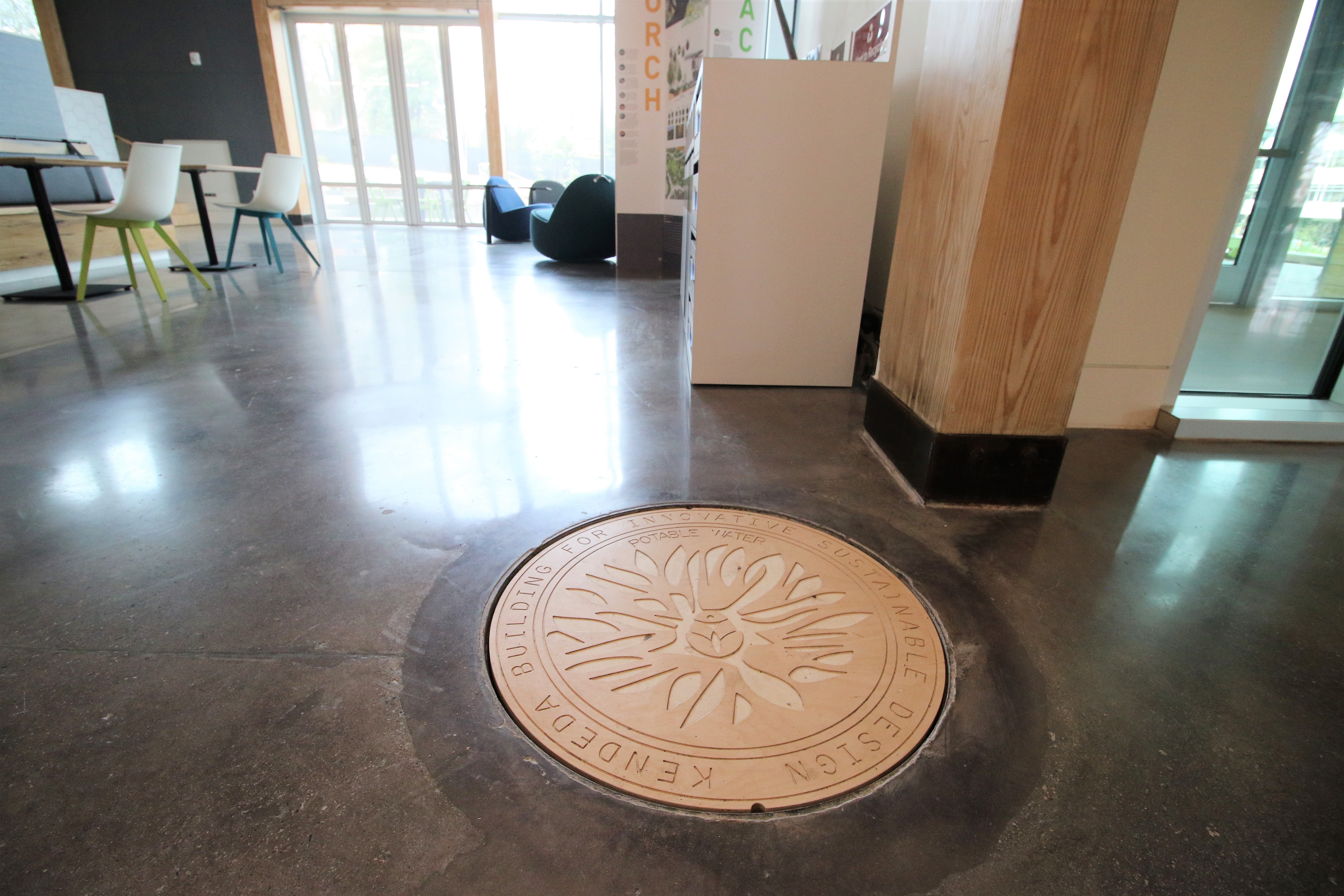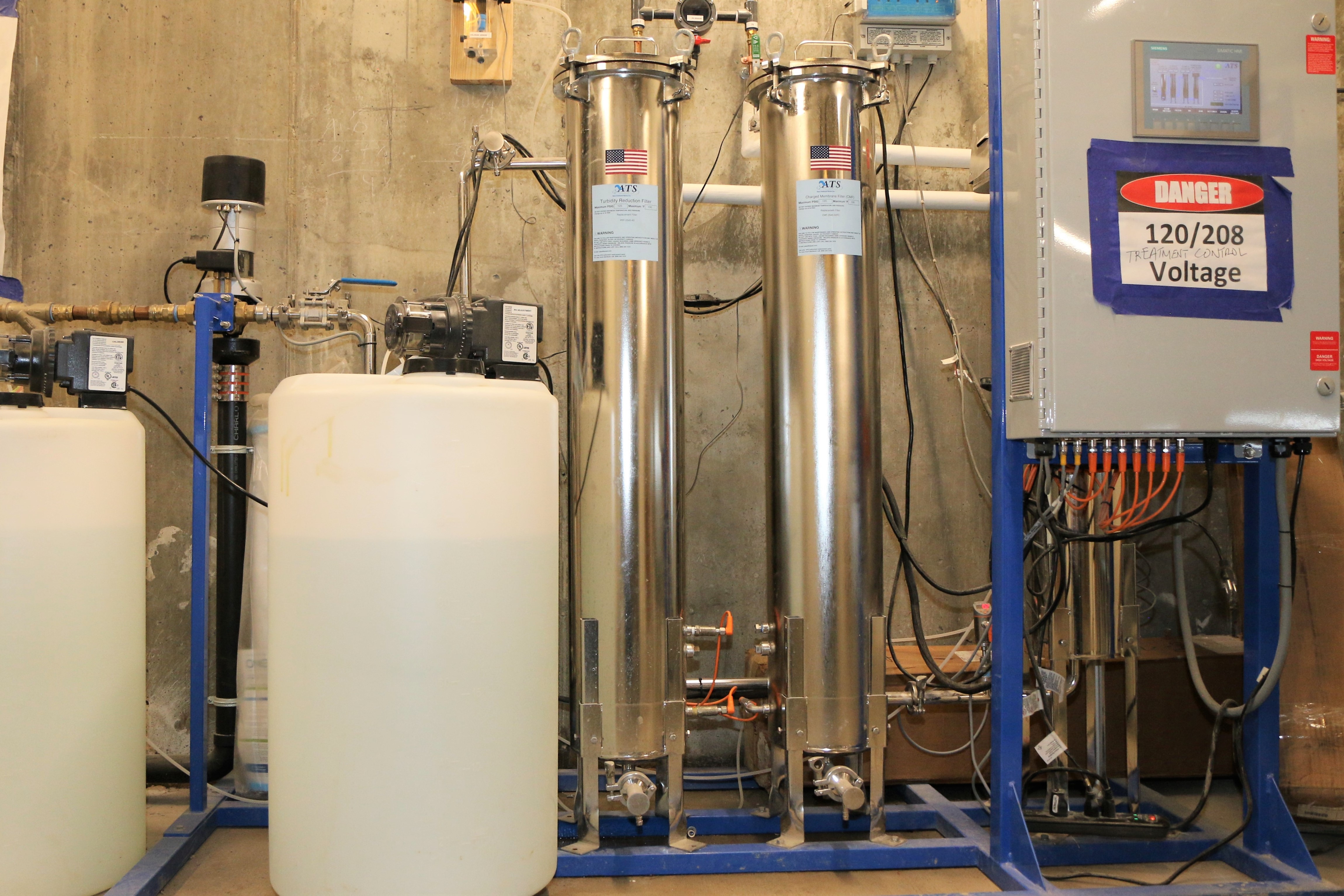Petal: Water
Imperative 05: Net Positive Water
Underground Cistern
Living Buildings must minimize stormwater runoff. The Kendeda Building’s landscape mimics the Piedmont Forest’s hydrology through seepage areas, rain gardens, and permeable pavers, allowing most rainwater to absorb into the ground.
Rainwater is also collected from the solar panels, roof deck, and green roof, then filtered into a 50,000-gallon basement cistern. This system captures about 40% of annual rooftop runoff. When the cistern is full, excess water is directed to on-site stormwater systems.
Images

